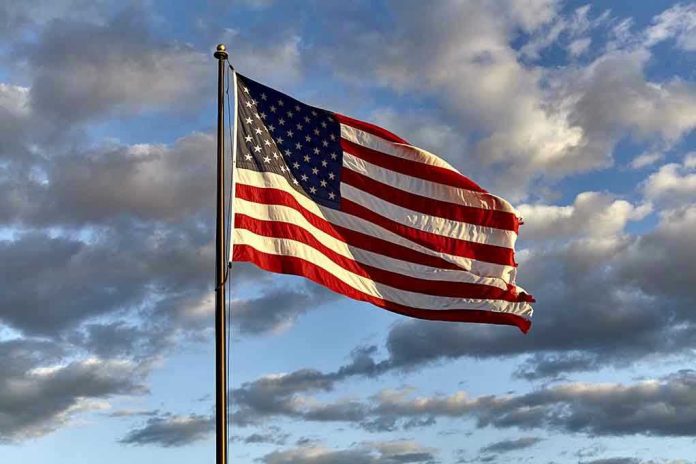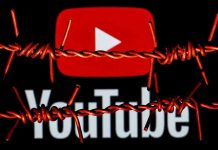
A former Democratic candidate’s protest sparking outrage, reignites the debate over freedom of speech and executive power.
Story Highlights
- Former Democratic House candidate Jay Carey arrested for flag burning protest.
- Carey’s protest targeted President Trump’s executive order on flag desecration.
- Arrest focused on fire safety violations, not flag desecration itself.
- Incident sparks renewed debate on First Amendment rights.
Protest Sparks Controversy at the White House
On August 25, 2025, in Lafayette Park near the White House, former Democratic House candidate Jay Carey was arrested after burning an American flag. This protest was a direct response to President Trump’s executive order directing the Justice Department to prioritize prosecutions for flag desecration. Carey’s actions reignited debates about First Amendment rights and the limits of protest, particularly regarding national symbols and executive authority.
Carey, an Army veteran and former congressional candidate, was charged with misdemeanors related to unauthorized fires on federal property. The charges against him were for lighting a fire not in a designated area and creating a fire that threatened property, not for the act of flag burning itself. This distinction underscores the complexity of legal interpretations surrounding protest actions post-Texas v. Johnson.
Legal and Political Implications
The arrest highlights the tension between protest rights and executive authority. While President Trump’s executive order did not create new penalties for flag desecration, it emphasized enforcement of existing laws on public safety and order. Legal experts assert that the Supreme Court’s 1989 Texas v. Johnson decision still protects flag burning as symbolic speech under the First Amendment, unless accompanied by other illegal acts.
Carey’s protest serves as a catalyst for renewed debates over freedom of speech and the constitutionality of executive actions. The incident has polarized public opinion, with many conservatives supporting Trump’s stance on safeguarding national symbols, while civil liberties advocates caution against potential infringements on free speech.
Impact on Political Discourse
Carey’s protest and subsequent arrest have become a focal point in the ongoing discourse about patriotism and protest methods. The incident is likely to influence future political narratives, especially in the context of the 2025 political climate where both sides of the aisle are leveraging such events for political messaging. As legal proceedings continue, this case could set important precedents for how similar incidents are handled in the future.
The broader implications of Carey’s protest extend beyond immediate legal consequences, potentially affecting political campaigns and public perceptions of protest rights. As debates continue, the incident underscores the delicate balance between national symbolism and individual freedoms in the United States.
Sources:
Former U.S. House Candidate ID’d in Flag Burning
Feds Charge Man Who Burned U.S. Flag Outside White House in Protest of Trump’s Executive Order
Flag Burning Has a Long History in the U.S. and Legal Protections from the Supreme Court
Western North Carolina Veteran Arrested for Burning U.S. Flag







